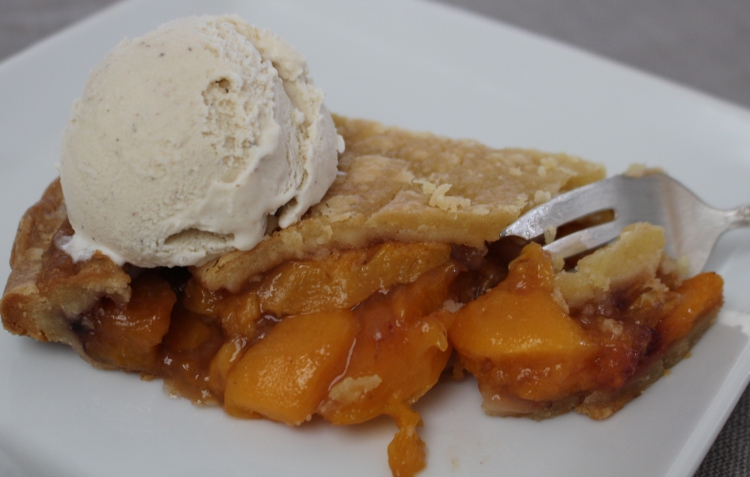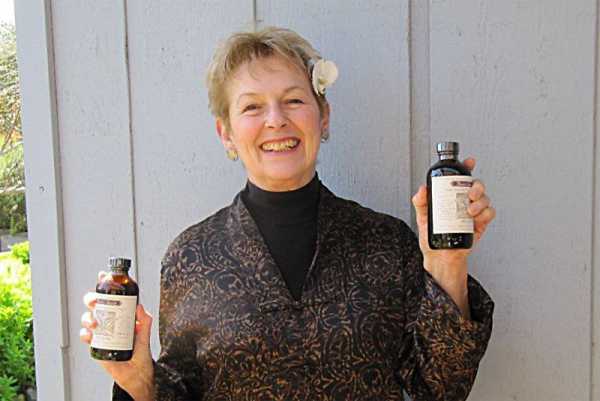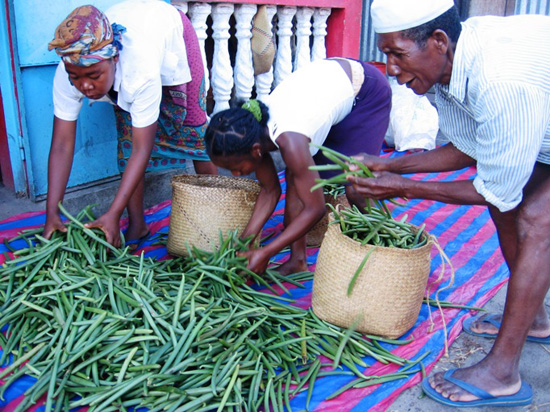
I'm amazed at how superior your vanilla is!
– Des, The Grommet
Theobroma cacao, originally considered by the indigenous peoples of Mexico, Central and northern South America, as the food of the gods, is known to us as chocolate. It grows in tropical forested areas within 20 degrees latitude either side of the equator. It originated along riverbanks in the Amazon basin in Northwestern Brazil.
There is major controversy about cacao’s origins in Mexico and Central America. Whether it developed independently in the tropical forests of Mexico and Central America or was taken there by an indigenous Mesoamerican group is at the heart of the debate. The current scientific belief is that cacao was taken from the forests in Northwestern South America and brought to Mesoamerica probably around 1500 years ago. However, an equally plausible theory is that criollo cacao is also indigenous to Southern Mexico.
There are a number of wild cousins of Theobroma cacao that live in the forest understory. Cupuacu, a popular tropical fruit in Brazil, is one of these cousins. However, only Theobroma cacao is used to make what we know as chocolate.
Cacao trees grow best in the filtered light in the forest understory and are moisture-loving plants, which is why they are often found wild alongside rivers. Wild trees have deep taproots whereas the cultivated trees do not. Cacao trees can be difficult to grow. They will die in temperatures below 60 degrees F and demand year-round moisture to survive.
Cauliflory is the term used for flowers and fruits that grow on the trunk and low branches of trees, a common occurrence with tropical fruits, including cacao. It is a response to the niche in which these plants flourish: damp, shaded understory.
Cacao leaves can move 90 degrees from vertical to horizontal and back to get better sun access and to protect young leaves. This is done by a node at the base of the leaf.
Cacao trees flower and fruit all year long. The small, delicate flowers and the fruits both grow on the tree’s trunk and occur simultaneously. On cacao plantations, only 3 out of each 1000 flowers are pollinated, and become fruit as plantations typically don’t provide the ideal conditions for the trees and therefore not as many pollinators. It takes five to eight months from blossom bud to ripe fruit.
Cacao is pollinated by midges (gnat-like insects) and occasionally by bats. Pollination usually occurs in the morning and the flowers die in 24 to 48 hours if not pollinated. The midges prefer the damp, shaded forest understory to large cacao plantations, one of the reasons that cacao plantations don’t have a high yield of fruits.
Once pollinated, each flower creates a large pod containing 30 to 40 almond shaped seeds surrounded by sweet, juicy pulp. The fruits take four to five months to reach full size and another month to fully ripen. The pods are green until they are ripe, at which point they will turn yellow, orange, red or purple. They will not split open when overripe, but will eventually dry up inside. Even though flowers are fertilized and pods ripen throughout the year, there are usually two main harvests as pods will keep on tree for several weeks.
Cacao beans are the seeds from the pod or fruit. At the center of the bean is the nib, from which chocolate is made. Over half the weight of the cured, dried nib is made up of fat, amount based and is based on the variety of cacao and growing conditions.
The trees live for up to 100 years, but cultivated trees are considered economically productive for 50 to 60 years. In the wild cacao grows to 50 feet or taller. Cultivated trees are kept smaller to make harvesting easier.
Cacao seeds were first processed to make a flavoring for beverages in Central America, probably by the early Coastal Olmecas. The word cacao has been traced to Mesoamerica and appears to have been coined by the early proto-Olmeca peoples on Mexico’s Gulf coast.
Most scholars believe that only the pulp, not the seeds, of T. cacao was consumed in pre-Columbian South America. The pulp, which also contains theobromine caffeine and other alkaloids, can be removed from around the seeds and made into a fruit beverage or can be fermented to produce an alcoholic drink. However, the baba is thin so a fair amount of pods would need to be used to make this beverage in any reasonable volume.
The pulp found in fresh pods is known as baba de cacao, or baba. It is refreshing and sweet-tart, similar to the flavor and texture of lychees or longon but it has no chocolate flavor. In some areas of Latin America the children refer to the pulp as “ice cream.” It does not resemble ice cream in any way, but is a treat nevertheless. The flavor and acidity of the fruit varies depending on the variety of the pod, and often has fruity or floral nuances.
Four steps are required to produce the cacao nibs, which will be ground into chocolate: fermenting, drying, roasting or toasting and winnowing. This process and sequence has been in place for at least three millennia. The process used today is very similar to the original processing methods.
Kakaw was the primary word used for cacao beans in Mesoamerica and from which the word cacao comes. Cocoa is a misspelling of cacao, which appeared on a ship’s manifest in the 18th century and led to the replacement of the original word, one we continue to use in the United States and Great Britain
In the Aztec empire cacao beans were used as money. In the markets of Tenochtitlan, the capital of the Aztecs, the beans could be exchanged for most commodities. They also served as payment for work service and to buy one’s way out of forced labor (slavery) Cacao beans were the preferred payment for tax or service obligations because most of the economic systems of Mesoamerica accepted the beans in payment.
In Nahuatl, the mother tongue of Mesoamerica, the word for the beverage was xocolatl or chocolatl, from which we derived chocolate.
It wasn’t until about 1590 that cacao was consistently used for making beverages in Spain. It was a drink used by the Spanish royalty and aristocrats. They changed the ingredients to include sugar and Ceylon cinnamon and milk was also introduced to cut some of the bitterness of the cacao.
For nine-tenths of cacao’s history as a food and flavor, it has been used as a beverage.
Cacao beans were quite possibly smuggled out of Spain to France by monks. It was quickly picked up by the aristocracy of France and soon became a popular beverage throughout Europe.
The Spanish encouraged plantations of cacao beans in their colonies in Latin America. In the seventeenth century, the British managed to acclimatize the cacao tree in Jamaica, as did the French in Martinique and the Dutch in Surinam. It wasn’t until the nineteenth century that cacao trees crossed the Atlantic, and were first brought to the island of São Tomé, a Portuguese colony, and later to West Africa. In the late nineteenth century the Dutch introduced cacao trees to the islands of Java and Sumatra in Indonesia.
Today, most of the world’s cacao beans are grown in Africa with roughly 40% of the conventional chocolate in the marketplace coming from the Cote d’Ivoire and Ghana. Other countries worldwide growing cacao commercially include Madagascar, Sao Tome, Sierra Leone, Togo, Gabon, Congo, Zaire, Grenada, Malaysia, Java, Sri Lanka, Sumatra, Philippines, Haiti, Dominican Republic, Jamaica, Trinidad, Cuba, Colombia, Venezuela, Ecuador, Brazil, Peru, Costa Rica, Mexico, Panama, Western Samoa and New Guinea.
There are three species of bean – Criollo, Forastero, and Trinitario – and many subspecies. More than 13,000 clones of cacao have been classified.
Over 90% of the world’s cacao production is Forastero cacao, a variety of bean that originated in the Amazon basin and is the most commonly used type of cacao today. The beans are flat and the interior is medium purple to dark purple. Flavors vary between astringent and acid to flowery and fruity in the better beans.
Only between 1 and 5% of the world’s chocolate is now Criollo, the finest variety of chocolate. It is a delicate plant, fragile and prone to disease. As a result, it is in danger of extinction due to its fragility and low productivity. It is the primary variety of cacao grown in Mexico and Central America.
The cocoa butter in cacao is used not only in confections but also by the pharmaceutical and cosmetic industries.
Currently, 4 million metric tons of beans worth more than $4 billion are produced each year. The global chocolate market is worth $75 billion annually.
The greatest consumers of chocolate are not the people in the countries where it grows. It has too much monetary value and the majority of the growers are smallholder farmers or poor plantation workers and cannot afford the luxury of a chocolate bar. Switzerland, Austria, Ireland, Germany and Norway are the top five consumers of chocolate. The US comes in at number 11 with a per capita consumption of 11.64 pounds of chocolate
Cacao could very easily become an endangered species. Disease and land mismanagement have dramatically cut productivity in regions of Africa. Increasingly Criollo cultivation has largely been discontinued because of its fragility. It is crucial that we support sustainably grown cacao if we are to continue to enjoy this remarkable food of the gods.
I was given a small bottle of Rain’s Choice in a gift basket and I have been hooked ever since. The flavor makes all of my baking so much better! I will never use grocery store vanilla again!


© 2021. All Rights Reserved
Designed/Developed by Kat & Mouse